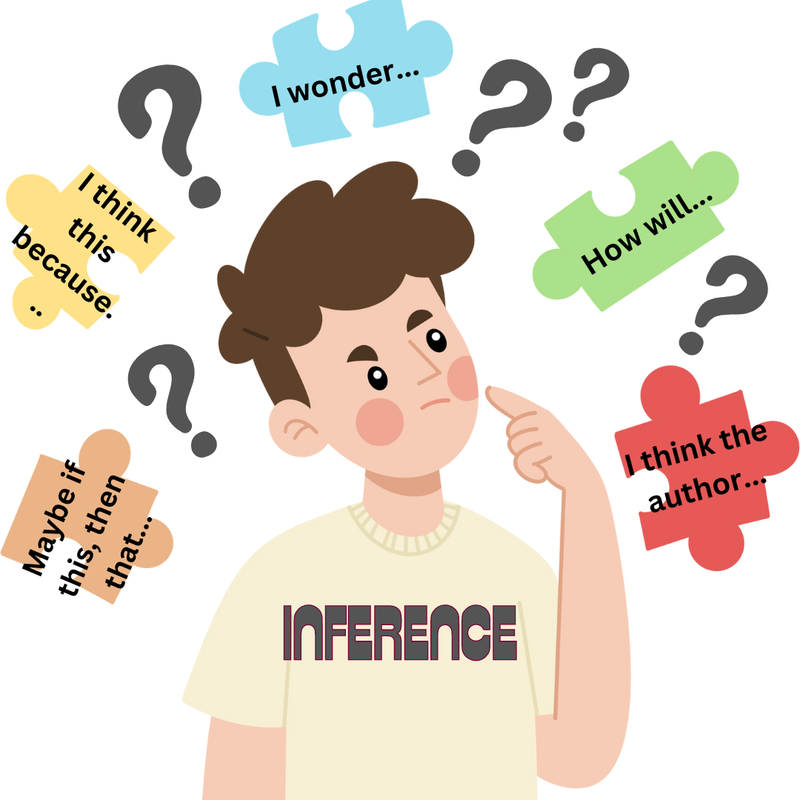Inferencing - Read between the lines

ELAL Learning Outcome (Knowledge) - Inferencing involves multiple critical thinking skills, including considering cause and effect relationships, answering personal wonderings, combining information from various sources to draw conclusions, and reading between the lines to discover the author’s meaning.
This lesson starts with inferencing exercises using single images or short video stories projected and discussed as a large group. It then moves to short texts, asking students what clues or information they have gathered from the text that helps them to better understand the characters and setting.
Lesson:
Objective: Students will learn and practice asking questions about what they are viewing and subsequently, reading in order to understand in more depth, the characters and setting.
Media samples and activities:
For the images, choose images that are relevant to students. For example, images of summer activities, or sports they enjoy, or family activities. Choose images that show details of setting and facial expressions and gestures that give clues as to what is happening.
The following website has a variety of images and accompanying questions:
https://www.onceuponapicture.co.uk/the-collections/the-inference-collection/
For videos, here are a few suggestions:
Pigeon: Impossible - https://youtu.be/jEjUAnPc2VA?feature=shared - this one has questions embedded within video for inferencing.
Geri's Game (Pixar) - https://youtu.be/9IYRC7g2ICg?feature=shared
For the Birds (Pixar) - https://youtu.be/9IYRC7g2ICg?feature=shared
For short text, I used suggestions from the following website: https://the-teacher-next-door.com/mentor-texts-for-teaching-making-inferences/
The Bracelet by Yoshiko Uchida and Joanna Yardley https://youtu.be/Gg9s4qEjifA?feature=shared
This one would be good to use during Asian Heritage Month.
Show the Youtube read aloud and pause to ask the following questions:
After the first 4 paragraphs,
What is happening? How is Emi feeling? Where is it taking place? Is it current or in the past?
Continue through first page and pause:
What ethnic background is Emi from? Is Laurie from the same ethnic background? Does this matter to the two friends?
Continue through to the car scene:
How are the families treated? What do you notice? How do they feel about leaving this way?
Continue through to arriving at the centre with the crowd:
How does Emi feel in the crowd? About the soldiers? What do you notice in the picture?
Continue through to the end of the story.
Key Questions:
What can we learn from the pictures? What words or phrases tell us about how the characters are feeling? How does pausing to notice help us to better understand the story?
What questions do you still have about this story or what you noticed? How could you answer your questions?
Followup:
The website listed above offers several book options for discussion. These could be used to further develop student inference skills.